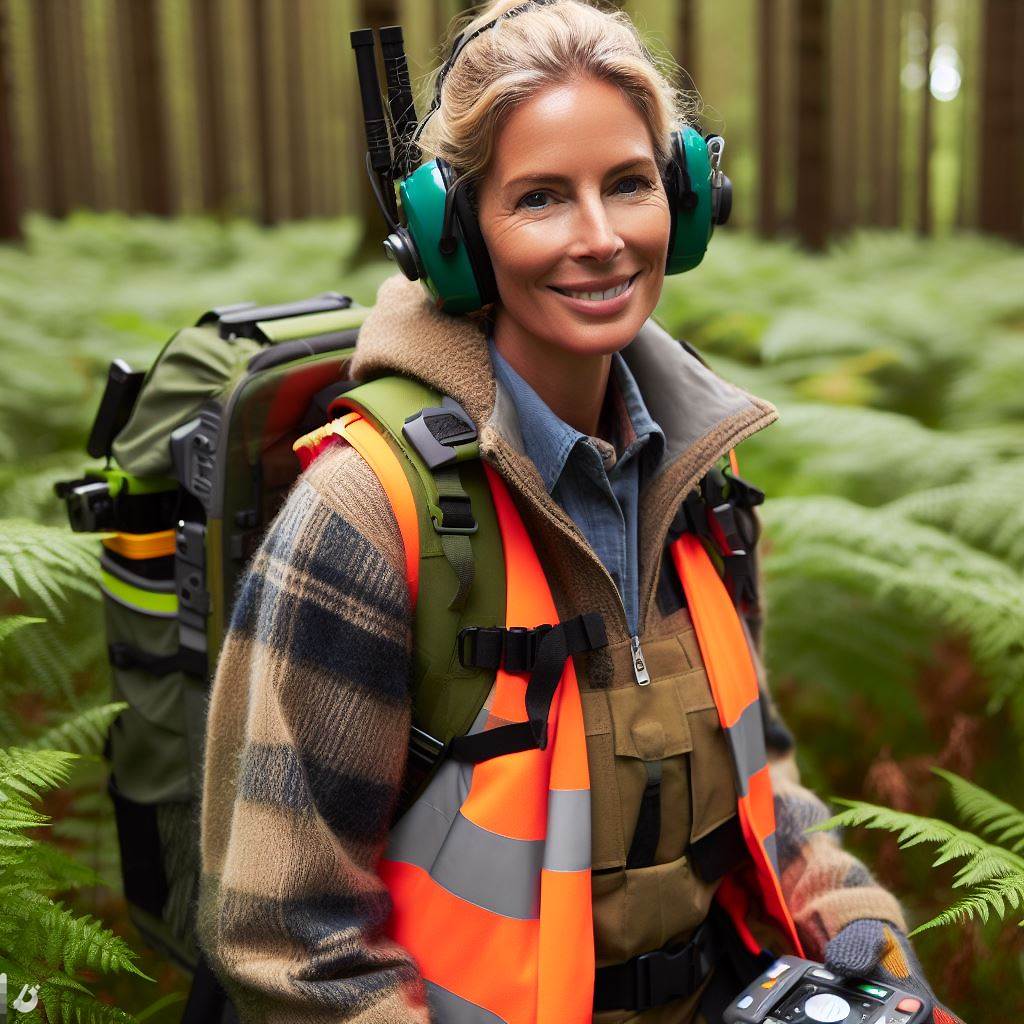Introduction
In the heart of the United Kingdom, trees stand as silent sentinels, witnessing the profound impact of climate change. These arboreal giants, integral to the UK’s delicate ecosystem, now face an unprecedented challenge.
The importance of trees in the UK ecosystem
Trees, with their critical role in oxygen production, carbon sequestration, and biodiversity support, are the unsung heroes of our environment.
Their roots intertwine with the very essence of the UK, providing shelter for wildlife, enhancing air quality, and contributing to the scenic beauty that defines the nation.
However, the escalating global climate crisis poses a serious threat to their existence. As temperatures rise, weather patterns shift, and extreme events become more frequent, the very fabric of the UK’s wooded landscapes is at stake.
The urgency to address climate change resonates worldwide, amplifying concerns for the fate of these resilient beings.
Governments, scientists, and communities are increasingly recognizing the pivotal role trees play in mitigating climate change and preserving ecological balance.
This section unravels the intricate dance between climate change and UK trees, shedding light on the profound consequences that ripple through our environment.
Through this exploration, we navigate the challenges, examine potential solutions, and underscore the critical need for collective action to safeguard the future of these vital ecosystems.
Understanding Climate Change
Climate change and its causes
Climate change refers to long-term shifts in weather patterns and average temperatures caused primarily by human activities.
The consequences of climate change on a global scale
The consequences of climate change on a global scale are severe and wide-ranging.
Rising global temperatures lead to melting ice caps, rising sea levels, and increased frequency of extreme weather events.
How climate change affects different regions differently
Climate change varies across regions due to geography, topography, and local weather.
Some face increased rainfall and floods; others endure prolonged droughts.
Coastal areas, vulnerable to climate change, risk erosion and habitat loss.
Altered climate negatively impacts agriculture, causing crop failures and food shortages.
Wildlife and ecosystems suffer, with habitat loss and species at risk of extinction.
The Arctic experiences rapid ice melt and biodiversity loss.
Africa faces desertification, water scarcity, and disease vulnerability.
Pacific Islands confront rising sea levels, displacing populations and cultural heritage loss.
Climate change brings economic implications: increased healthcare costs, infrastructure damage, and property loss.
Mitigation requires collective efforts from governments, businesses, and individuals.
Crucial steps include reducing greenhouse gas emissions, transitioning to renewables, and adopting sustainable practices.
Investing in research for climate adaptation is vital.
Building resilient communities and infrastructure minimizes vulnerability.
Education and awareness foster responsibility and sustainable behaviors.
International cooperation, like the Paris Agreement, is essential for global climate action.
Despite felt impacts, taking action now can mitigate damage and protect future generations.
Understanding climate change causes and consequences guides us toward a sustainable future for ourselves and the planet.
UK Trees and their Importance
The UK hosts diverse tree species—oak, beech, birch, pine—vital for ecological balance and wildlife habitats.
Trees actively sequester carbon, aiding climate change mitigation.
They prevent soil erosion, filter pollutants, and produce oxygen, enhancing air quality.
Forests offer recreation opportunities and support mental well-being.
UK trees contribute economically through the timber industry, creating jobs and supporting rural economies.
Forests attract tourists, bolstering the tourism sector.
Trees provide ecosystem services, promoting biodiversity and cultural heritage.
Ancient and locally significant trees are protected.
UK trees regulate temperatures, offering shade and acting as windbreaks.
Climate change-induced tree loss impacts the environment, biodiversity, and communities.
The UK government prioritizes tree conservation initiatives, ensuring long-term sustainability.
Efforts focus on tree planting and restoration projects nationwide.
Individuals and communities are urged to engage in tree planting and conservation for collective ecological, environmental, and economic preservation.
In essence, UK trees, aesthetically pleasing and essential, actively maintain ecological balance, support wildlife, and yield economic benefits.
Their role in carbon sequestration, habitat preservation, and resource production is crucial for climate change mitigation and community well-being.
Effects of Climate Change on UK Trees
Direct Impacts on Tree Health
- Climate change negatively affects the health of trees in the UK.
- Increased temperatures and changing rainfall patterns are key factors damaging tree health.
- These changes can lead to drought stress, reducing a tree’s ability to grow and reproduce.
- Extreme weather events such as storms and heatwaves can cause physical damage to trees.
Impact on Tree Growth
- The higher temperatures resulting from climate change can stimulate tree growth.
- Some species may benefit from longer growing seasons and increased carbon dioxide levels.
- However, changing rainfall patterns can disrupt the balance of water availability for trees.
- Water stress due to insufficient rainfall can inhibit tree growth and increase mortality rates.
Risk of Pests and Diseases
- Climate change promotes the spread of pests and diseases, posing a growing risk to UK trees.
- Warmer temperatures create more favorable conditions for pests and diseases to thrive.
- Invasive species may expand their range, outcompeting native trees and damaging ecosystems.
- Pests like the oak processionary moth and diseases like ash dieback have already caused significant harm.
In short, climate change has direct impacts on tree health in the UK, affecting growth and increasing the risk of pests and diseases.
It is essential to take immediate action to mitigate climate change and protect our valuable tree resources.
Personalized UK Career Consulting
Receive tailored career guidance designed just for you. Get actionable steps and expert support to boost your career in 1-3 days. Take control of your career now.
Get StartedRead: Aquatic Health Management by UK Experts

Changes in Tree Distribution and Migration
Climate change has undoubtedly brought about significant impacts on the geographical distribution of trees in the UK.
As temperatures rise and weather patterns shift, trees are forced to adjust their habitat ranges and migrate towards cooler areas.
Influences on Geographical Distribution
The influence of climate change on the geographical distribution of trees in the UK cannot be underestimated.
Rising temperatures and altered precipitation patterns directly affect the growth and survival of different tree species.
As temperatures increase, certain tree species that were previously restricted to southern parts of the UK are now finding suitable conditions further north.
This means that the range of these species is expanding, while other species may be experiencing a contraction of their habitat.
Moreover, changes in precipitation patterns can also affect tree distribution.
Areas that receive less rainfall than before may become unsuitable for certain tree species, leading to their decline or local extinction.
In contrast, regions experiencing increased rainfall may become more favorable for different tree species to establish themselves.
Potential for Tree Migration
With climate change altering the temperature and precipitation patterns, tree migration towards cooler areas becomes a likely scenario.
As the environment becomes less suitable in their current locations, trees will seek refuge in regions where conditions are more favorable for their growth and survival.
This migration not only includes trees moving towards northern latitudes but also higher altitudes. Mountains serve as natural stepping stones for tree species to migrate to cooler zones.
For instance, lowland trees may move up the slopes of mountains, effectively changing the composition of entire ecosystems as they establish themselves in new habitats.
Your Dream Job Starts with a Perfect CV
Get a tailored CV and cover letter that captures your unique strengths and stands out in your industry. Let us help you make an unforgettable first impression.
Get StartedChallenges and Potential Benefits
Altered tree distribution poses both challenges and potential benefits. One of the main challenges is the loss of native tree species in their original habitats.
This can have negative implications for biodiversity and ecosystem functioning, as some species may struggle to adapt or face increased competition from invasive tree species.
On the other hand, altered tree distribution can also bring potential benefits. It may lead to increased species diversity in certain regions as new tree species migrate in.
This can enhance ecosystem resilience and provide opportunities for ecological restoration.
Moreover, as trees migrate towards cooler areas, they can play a crucial role in mitigating the effects of climate change.
Trees absorb carbon dioxide, a major greenhouse gas, from the atmosphere through photosynthesis, helping to reduce the overall carbon footprint.
In general, climate change is causing significant changes in the geographical distribution of trees in the UK.
As temperatures rise and precipitation patterns shift, trees are forced to migrate towards cooler areas, potentially altering entire ecosystems.
While challenges arise from this change, there are also potential benefits, such as increased biodiversity and the mitigation of climate change effects.
Read: Aquaculture Equipment Essentials in the UK
Adaptation Strategies for UK Trees
In order to help UK trees adapt to the challenges of climate change, several strategies can be implemented:
- Promote tree diversity and genetic variation
- Implement effective management practices
Promoting Tree Diversity and Genetic Variation
The importance of enhancing tree diversity and genetic variation cannot be overstated. It helps trees adapt to changing conditions by increasing their resilience and ability to withstand new threats.
Plant a wider range of tree species
By planting a wide variety of tree species, individuals that are better adapted to changing climates can emerge and thrive, ensuring the survival of the ecosystem.
Preserve local and native tree populations
Protecting local and native tree populations helps maintain genetic diversity and preserve the adaptations that have evolved over centuries to withstand specific regional conditions.
Optimize Your LinkedIn for Success
Boost your LinkedIn profile with a professional bio, keyword-rich headline, and strategic recommendations that attract recruiters. Stand out from the crowd and get noticed.
Optimize NowAssisted migration
In some cases, introducing trees from more southerly regions with similar climatic conditions can be beneficial, as these trees may be better adapted to anticipated future climate patterns.
Implementing Effective Management Practices
In addition to promoting tree diversity and genetic variation, effective management practices are essential to mitigate the negative impacts of climate change on UK trees.
Sustainable forest management
Practicing sustainable forest management ensures the preservation of tree health, allows for natural regeneration, and minimizes habitat fragmentation, which enhances tree resilience.
Implementing proper tree care and maintenance
Regular monitoring, tree pruning, and appropriate watering can enhance the overall health and vigor of trees, helping them cope with changing climate conditions.
Managing pests and diseases
Monitoring and implementing proactive measures to control pests and diseases minimize their impact on tree health and prevent further stress caused by climate change.
Restoring degraded habitats
Reforestation and habitat restoration efforts can increase overall tree cover and restore biodiversity, providing a haven for tree species to adapt and thrive.
Engaging in climate-conscious landscaping
Planning and designing landscapes that prioritize native trees, promote water conservation, and reduce heat island effects can help create a more resilient urban environment.
Educating the public and stakeholders
Raising awareness about the importance of tree diversity and the need for sustainable management practices helps garner support and encourages broader adoption of these strategies.
By implementing these adaptation strategies, the UK can better prepare its trees for the challenges presented by climate change, ensuring their long-term survival and the vital ecosystem services they provide.
Read: Aquaculture in the UK: Education Pathways
Conservation Efforts and Tree Planting
Conserving UK trees in the face of climate change is crucial to maintain the natural ecosystem and mitigate its effects. Ongoing conservation efforts play a vital role in protecting these valuable assets.
Highlighting Ongoing Conservation Efforts
Various organizations and agencies are actively involved in safeguarding UK trees from the adverse impacts of climate change.
These efforts are focused on preserving the existing trees and promoting their resilience.
One key approach is through the careful monitoring of tree health and early detection of any signs of stress or disease.
This enables prompt intervention and treatment, ensuring the longevity of the trees.
Additionally, conservation efforts involve implementing sustainable management practices, such as thinning overgrown areas and considering the appropriate species for specific regions.
These strategies aim to enhance the overall health and diversity of the tree population. Another important aspect of conservation is the creation and protection of woodland habitats.
This provides a safe environment for various species of trees, allowing them to thrive and adapt to changing climatic conditions.
The Role of Tree Planting Initiatives
Tree planting initiatives are essential in mitigating the effects of climate change and creating a more resilient ecosystem. These efforts focus on increasing tree coverage and enhancing carbon absorption.
By planting additional trees, the overall carbon footprint can be reduced as trees absorb carbon dioxide, a greenhouse gas responsible for global warming.
This helps combat climate change and its adverse effects on UK trees.
Moreover, trees provide numerous benefits beyond carbon sequestration. They contribute to improved air quality by filtering pollutants and produce oxygen essential for human and animal survival.
Tree planting initiatives also emphasize the selection of native or climate-resilient species, ensuring the longevity and effectiveness of newly planted trees.
This enhances the overall resilience of UK forests and ensures their continued ability to adapt to changing conditions.
Involving Communities and Raising Awareness
Engaging communities in tree planting initiatives and raising awareness about the impact of climate change on UK trees is paramount for successful conservation efforts.
By involving local communities, the emphasis shifts from merely planting trees to creating a sense of ownership and responsibility.
This fosters long-term care and ensures the survival and growth of the planted trees.
Furthermore, raising awareness about the importance of trees and their role in mitigating climate change encourages individuals to actively participate in conservation efforts.
Education programs and outreach initiatives play a pivotal role in promoting environmental stewardship.
When communities come together to protect and plant trees.
It not only benefits the UK’s ecosystem but also creates stronger bonds within the community and a sense of pride in their shared accomplishments.
Conservation efforts and tree planting initiatives are essential components in protecting UK trees from the impacts of climate change.
By highlighting ongoing efforts, promoting tree planting, and involving communities, we can work towards creating a resilient ecosystem that can withstand the challenges of a changing climate.
Read: Sustainable Practices in UK Aquaculture Tech
Conclusion
The impact of climate change on UK trees poses significant threats. Rising temperatures and changing rainfall patterns disrupt their growth and increase the spread of pests and diseases.
The loss of trees not only affects biodiversity but also exacerbates climate change.
Urgent action is needed to mitigate these effects. It is crucial to reduce greenhouse gas emissions and support conservation efforts through tree planting and restoration projects.
Individuals can also make a difference by engaging in sustainable practices such as reducing carbon footprint, conserving water, and supporting organizations working to protect trees and forests.
By supporting conservation efforts and adopting sustainable practices, we can contribute to the preservation of UK trees and the ecosystems they support.
Together, we can mitigate the impacts of climate change on these vital natural resources and ensure a healthier, greener future for generations to come.
Let us unite in the fight against climate change and be the change our trees need.
[E-Book for Sale]
500 Cutting-Edge Tech Startup Ideas for 2024 & 2025: Innovate, Create, Dominate
$19.99 • 500 Tech Startup Ideas • 62 pages
You will get inspired with 500 innovative tech startup ideas for 2024 and 2025, complete with concise descriptions to help you kickstart your entrepreneurial journey in AI, Blockchain, IoT, Fintech, and AR/VR.




